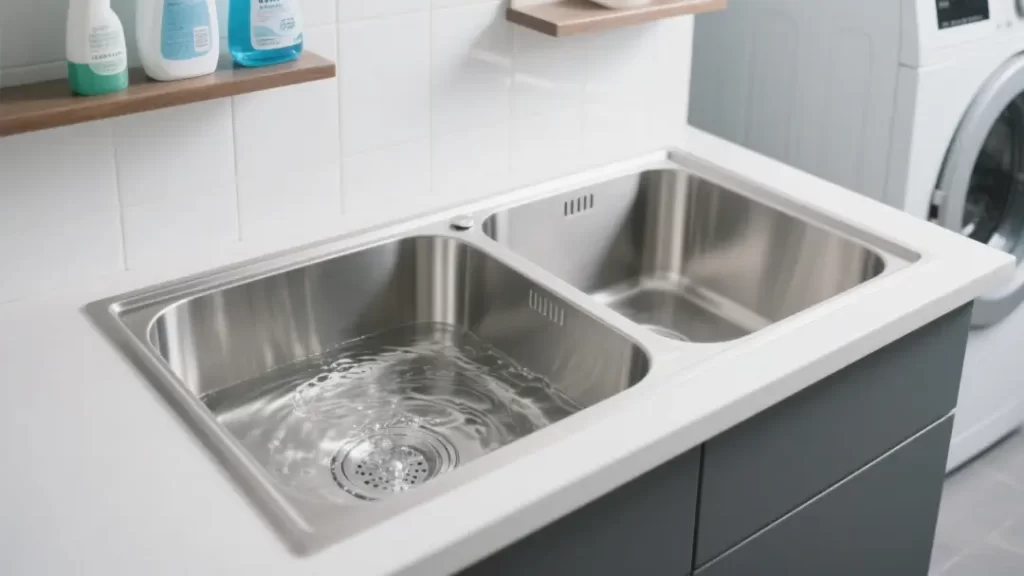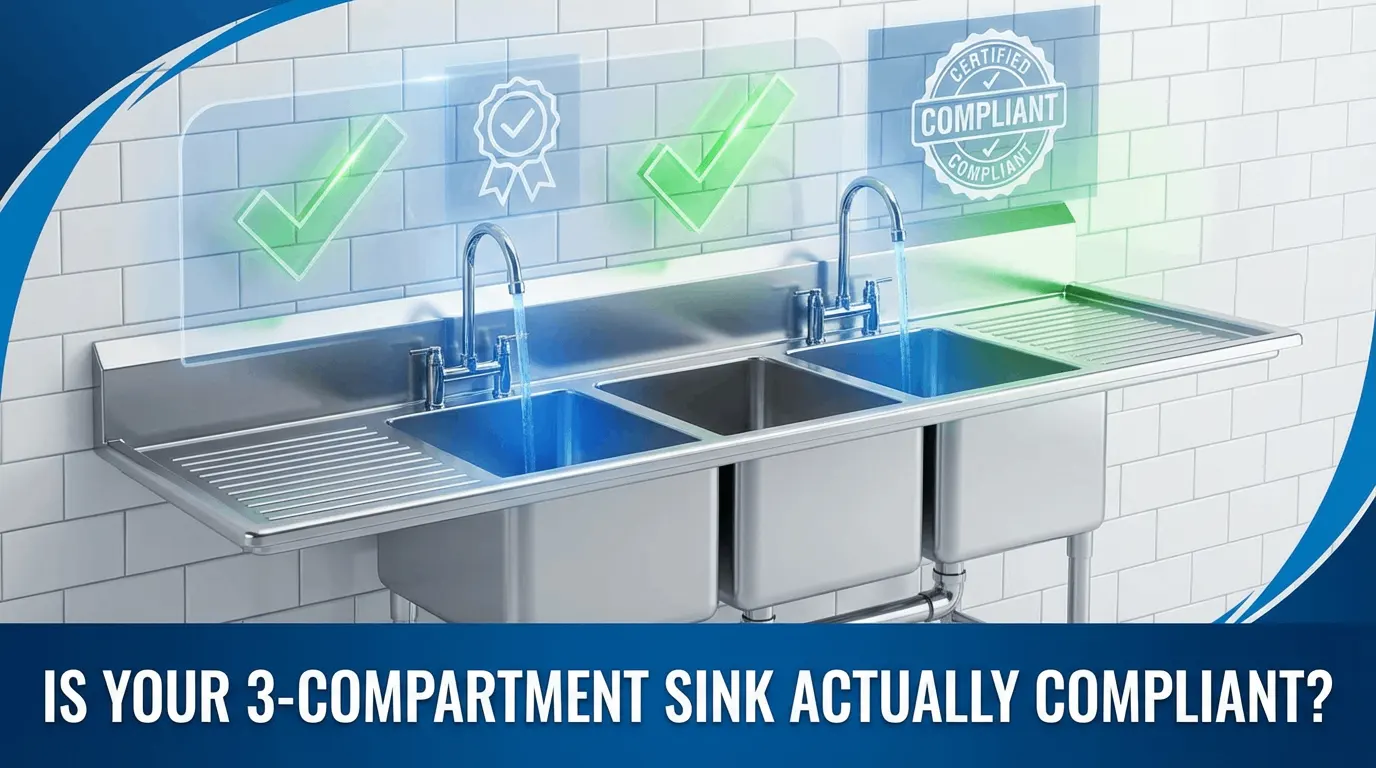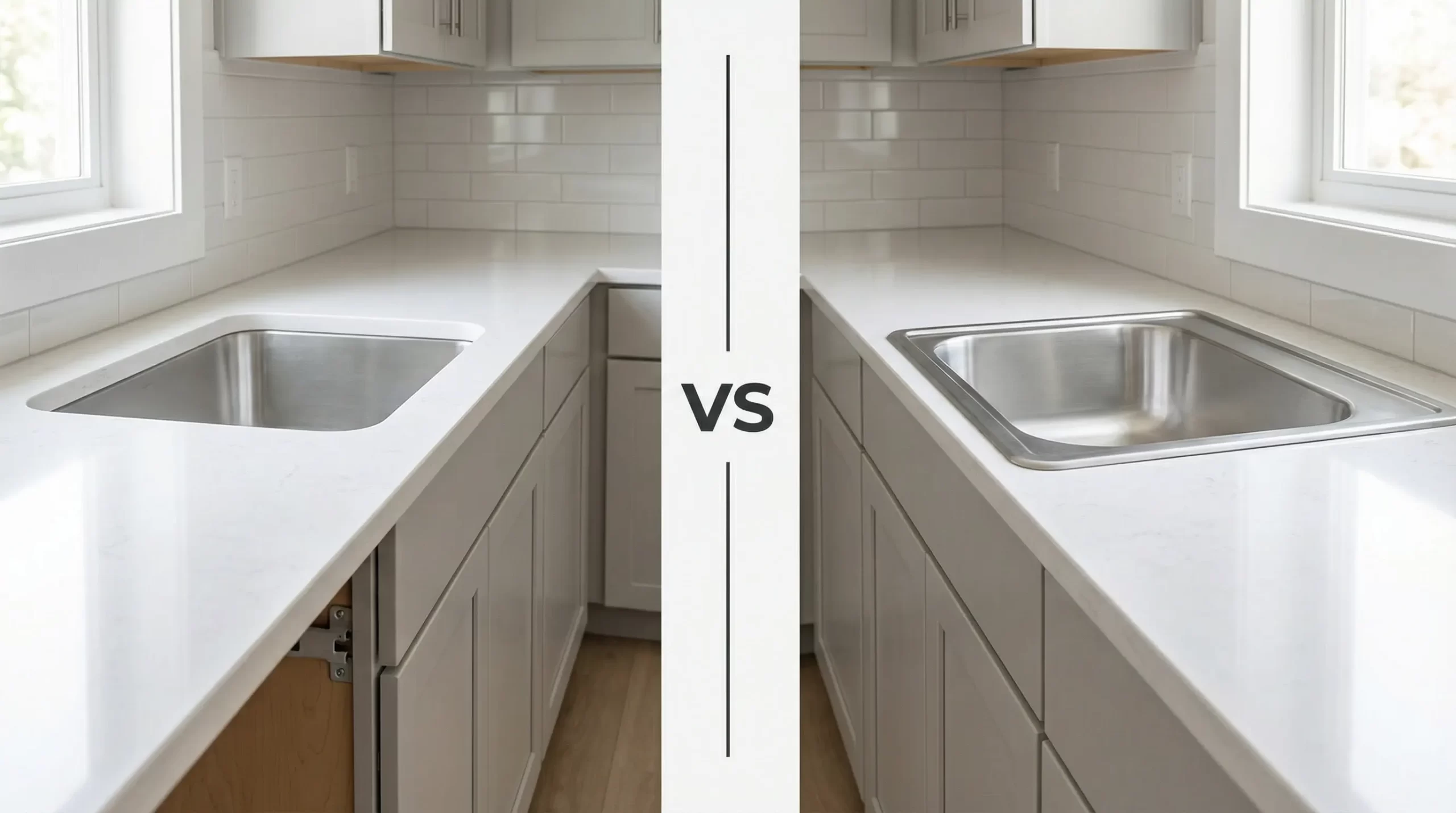How to Choose the Right Small Laundry Sink for a Laundry Room
Picking a small laundry sink involves measuring your space and leaving some wiggle room, choosing between durable stainless steel, classy ceramic, or lightweight composite materials, going for a simple single basin or an efficient double basin, adding clog-proof drainage and a flexible faucet, and deciding on a countertop, under-counter, or freestanding setup—all based on your budget, from basic to premium, to keep it practical and just right.
Size and Space
Laundry rooms are usually tight on space, especially with a washer, dryer, and cabinets already in place, leaving little room for a laundry sink. Size is the first thing to nail down—too big won’t fit, too small won’t cut it, so you’ve got to find that sweet spot.
Start by measuring. Grab a tape measure and jot down the height from floor to countertop, the distance from the wall to the washer, and the width corner to corner—don’t skip the small stuff. Leave at least 6 inches of clearance for cleaning, repairs, or moving things around. If there’s a faucet, pipes, or outlets nearby, plan ahead to avoid a mess during installation.
The sink’s depth and width affect how it feels to use. A deep sink is great for big items like sheets and comforters, keeping water from splashing everywhere; a wide one lets you pile in more clothes and speeds things up. For a tiny laundry room, a narrow but deep sink is a smart pick—saves space while still getting the job done.
How you install it ties into size too. A countertop sink works if you’ve already got a surface—just set it down and secure it, easy to swap out later. An under-counter sink needs to be tucked into the countertop for a clean look, but you’ll have to measure the cutout right. A freestanding sink with legs or a base is perfect for bigger rooms since you can move it around, though the floor needs to be level or it’ll wobble.
Here’s a handy chart to break down size options:
| Sink Size (L×W×D) | Best For | Pros | Cons |
|---|---|---|---|
| 24×16×8 in | Small rooms, light hand-washing | Takes up little space, easy setup | Limited capacity, tough for big loads |
| 32×20×10 in | Medium rooms, daily laundry | Decent capacity, versatile | Takes more space, trickier install |
| 40×24×12 in | Big rooms, frequent large items | Holds a lot, super handy | Eats up space, costs more |
Measure smart, plan it out, and your sink will fit like it was made for the room.

Material
The material of your laundry sink affects how long it lasts, how easy it is to clean, and even how good your laundry room looks. Stainless steel, ceramic, and composite materials are the usual suspects—each has its perks and quirks, so pick based on what you need and like.
Stainless steel is a go-to—tough and practical. It’s rust-resistant, so it handles the damp laundry room vibe no problem, and the smooth surface wipes clean with a damp cloth. It’s got a simple, modern look that fits sleek home styles, and its durability is the real star.
Ceramic brings some flair, with a glossy finish and more color options to make your laundry room feel upscale and elegant. It’s a breeze to clean—just a swipe with mild cleaner does it. But it’s heavy, so check your countertop can handle the weight, and it’s prone to chipping, so handle with care.
Composite materials are the new kid on the block, usually a mix of resin and quartz—lightweight and scratch-resistant, easy to move around. Lots of them come with stain- and germ-fighting features, perfect for neat freaks. They’re not as tough as stainless steel, though, and might show scratches or fade over time.
Check out this material rundown:
| Material | Durability | Ease of Cleaning | Look | Weight | Price Range |
|---|---|---|---|---|---|
| Stainless Steel | Super High | Really Easy | Sleek & Modern | Medium | Mid-range |
| Ceramic | Decent | Easy | Classy & Chic | Heavy | Higher |
| Composite | Decent | Easy | Lots of Styles | Light | More Affordable |
Think about what matters most. If you’re washing daily and want something that lasts, stainless steel’s your bet. Want a stylish laundry room? Ceramic’s a winner. Tight budget or love lightweight stuff? Composites are worth a look. Get the material right, and it’ll feel good to use and look at.
Features and Design
The design of your laundry sink decides how smooth it works for you. A solid setup can boost your washing game and make the most of your space—every detail, from basin style to extras, counts.
Single vs. double basins is the big choice. A single basin is straightforward and space-saving, ideal for small laundry rooms—just right for hand-washing socks or undies, and it cleans up fast. A double basin steps it up, letting you soak dirty stuff on one side and rinse on the other—super efficient for busy households, though it takes up more room.
Don’t sleep on drainage. A sink that drains well saves headaches—go for one with a clog-resistant design, like a removable filter to catch hair and gunk. A drain at the bottom is best, letting water flow out completely, no funky puddles left behind.
The faucet’s a game-changer too. A pull-out or swiveling one makes rinsing big stuff like sheets or curtains a cinch—flexible and fast. If there’s no water line nearby, grab a sink with a built-in faucet for instant access.
Here’s a quick feature guide:
| Feature | Best For | Pros | Cons |
|---|---|---|---|
| Single Basin | Small rooms, light use | Saves space, easy to clean | Not great for big jobs |
| Double Basin | Medium rooms, regular washing | Clear tasks, fast work | Takes more space |
| Clog-Resistant Drain | Lots of laundry, debris | Drains well, low upkeep | Filter needs cleaning |
| Flexible Faucet | Big items often | Easy to use, quick rinse | Costs more, up to you |
Match features to your habits. Light washing? Single basin’s fine. Heavy-duty laundry? Double basin with a clog-proof drain and flexible faucet will make life easier. Smart design turns your sink into a trusty sidekick.

Installation Options
How you install your laundry sink affects both how it works and how the room looks. Countertop, under-counter, and freestanding styles each have their ups and downs—pick what fits your laundry room’s setup and vibe.
Countertop sinks are the usual pick for rooms with an existing surface. They’re a snap to install—just plop it down and lock it in, and swapping it out later is no sweat. The catch? Dust collects around the edges, so you’ll need to wipe it down now and then.
Under-counter sinks are all about looks, sinking into the countertop for a seamless, tidy finish—plus, you get extra counter space. They’re great if you love a clean aesthetic, but installation’s a bit of a project; you’ve got to measure the cutout perfectly, and the counter needs to hold up.
Freestanding sinks stand alone with legs or a base, free to move wherever—ideal for bigger rooms and easy floor cleaning. You’ll need to hook up water and drain lines yourself, though, which can be a hassle.
Here’s the install breakdown:
| Install Type | Best For | Pros | Cons |
|---|---|---|---|
| Countertop | Rooms with counters | Quick setup, easy swap | Edges get dusty, wipe often |
| Under-Counter | Clean-look lovers | Sleek, more counter space | Tricky install, measure well |
| Freestanding | Big, flexible rooms | Move it anywhere, easy floor access | Plumbing’s a chore |
Pick based on your space. Small room with a counter? Countertop’s simplest. Want it sleek? Under-counter’s your guy. Big space and love options? Go freestanding. Install it right, and it’ll feel just right.
Budget
Choosing a small laundry sink means facing the budget question. Materials, features, and installation styles all shift the price tag—aim for the best bang for your buck, meeting your needs without breaking the bank.
Materials set the price baseline. Stainless steel’s mid-range, tough, and reliable—a favorite for many. Ceramic’s pricier with its fancy look and easy upkeep, perfect for quality seekers. Composites are wallet-friendly, light, and sturdy, a solid choice if cash is tight.
More features, more cost. A single basin keeps it cheap and simple; double basins, clog-proof drains, and flexible faucets bump up the price but make washing smoother. If you’ve got room in the budget, fully loaded sinks level up the experience.
Installation plays a part too. Countertop’s the cheapest—quick and easy. Under-counter needs pro tools and precision, so it costs more but looks polished. Freestanding’s versatile but might need extra fittings, adding to the bill.
Leave some cushion in your budget. Sinks stick around, and cleaning or upkeep costs add up. Go for something solid and fairly priced—good now, not a hassle later.
Here’s a budget snapshot:
| Budget Level | Good Picks | Why It Works |
|---|---|---|
| Low | Stainless single basin, countertop | Cheap, gets the job done |
| Medium | Stainless double basin, drain or faucet add-ons | More features, comfy use |
| High | Premium stainless or ceramic, full features, any install | Top-tier function and style |
Prices vary by brand and specs—check local spots like Home Depot or ask a seller. Tight budget? Stick to sturdy basics. Got extra cash? Splurge on features and flair for a laundry room that’s both useful and sharp.






